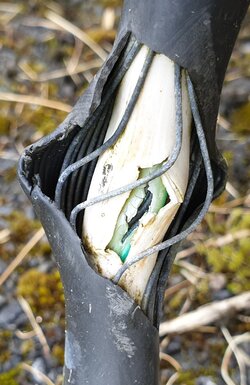- Dec 2, 2019
- 1,782
- 2,586
- 3,688
- If you're a qualified, trainee, or retired electrician - Which country is it that your work will be / is / was aimed at?
- United Kingdom
- What type of forum member are you?
- Practising Electrician (Qualified - Domestic or Commercial etc)
- Business Name
- F. H. Electrical
The point of the fuse preceding the cable is that the fault current in the cables cannot reach a point that the cables would basically melt/explode due to current. i.e. the fuse is there to protect the cable so we would expect to find the rating of the fuse before the cable supplying the next submain would be lower then the cable rating in very simple terms. There is no way of knowing that in the future someone would not increase that load. But I am thinking of a short on the cables coming from the henley box that would be the problem there.











